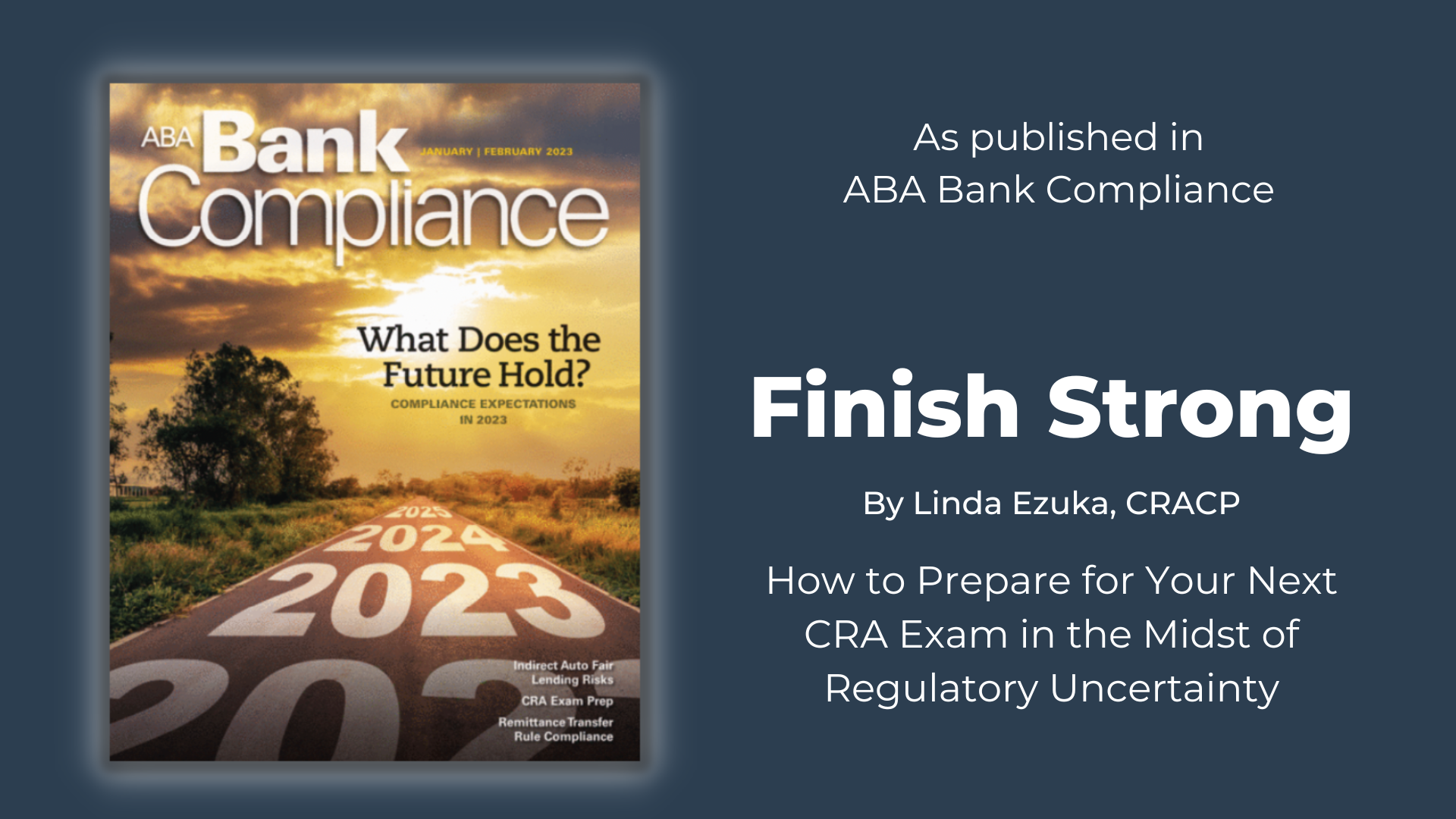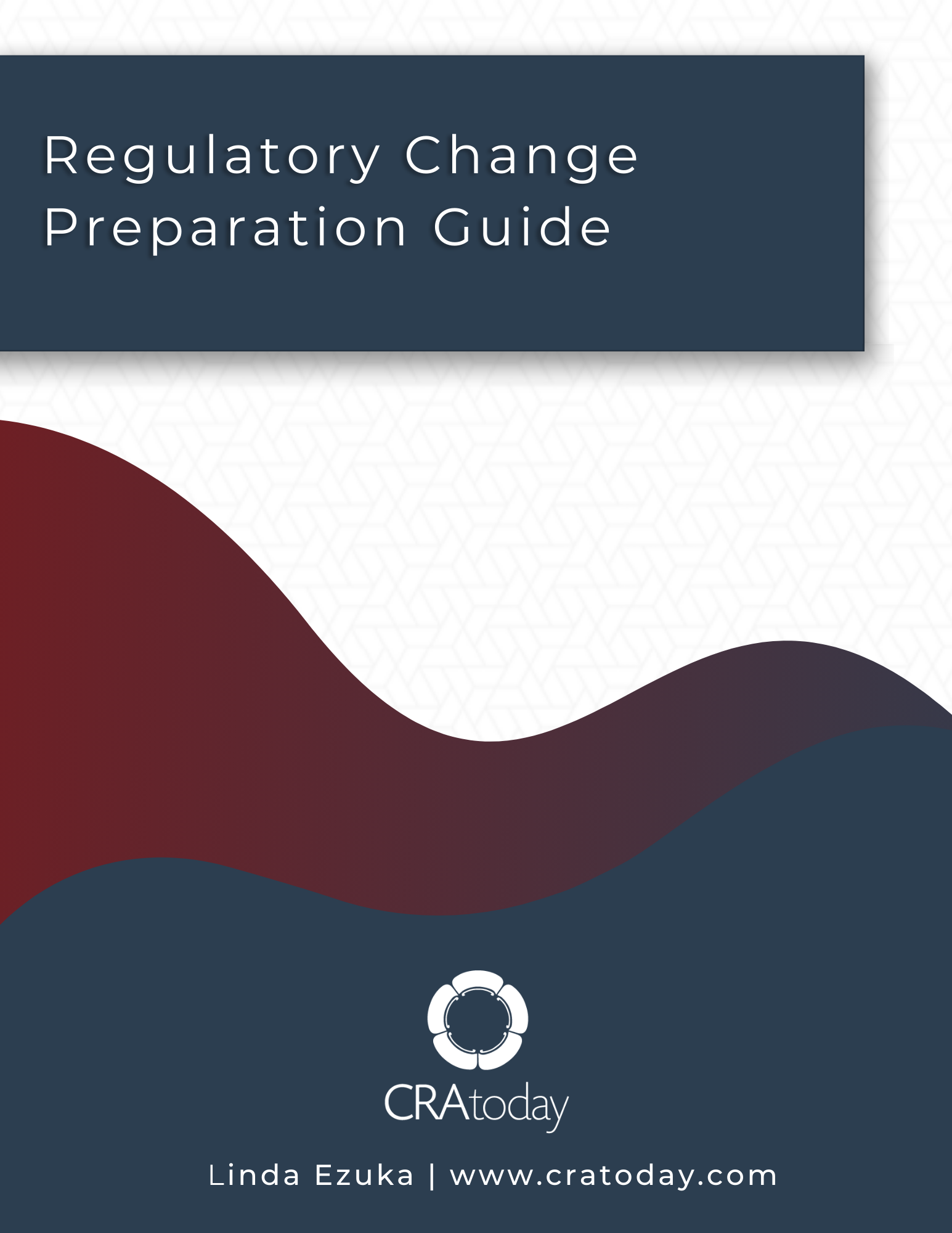
CRA Tips, regulatory change, and an occasional deep thought…

Quick tips, CRA concepts and an occasional deep thought…
CRA Today Blog

What To Do Now That CRA Regulatory Change Has Arrived
Whether you like it or not, Community Reinvestment Act (CRA) regulatory change is here. Unless you’re near retirement age and can say, “I’m out,” the new CRA rules are likely to bring more pressure to your department and make your job a lot more challenging. While...

How First Northern Bank of Dixon Found the Perfect CRA Support Team
Ever feel like you’re missing the CRA support you need? Having to comply with the Community Reinvestment Act (CRA) means tracking a lot of data and learning a lot of new information. But resources are scarce for bankers coming into a CRA role, and finding this support...

Driving Impact and Building Trust: The Power of Collaboration Between Compliance Professionals and Lenders in Community Development Lending
Community development lending is a critical tool for driving impact and building stronger communities, but it requires a deep understanding of regulatory compliance and risk management. Compliance professionals and lenders are essential partners in this process,...

Finish Strong, as published in ABA Bank Compliance
Between keeping up with Community Reinvestment Act (CRA) modernization efforts, the finalization of Section 1071 of the Dodd-Frank Act, and increased fair banking scrutiny, compliance officers have plenty on their plates. No matter what the outcome of the proposed CRA...

Part of a Small CRA Team? Here’s How to Get the Help You Need
Are you part of a small CRA team? Many CRA departments are made up of only one or two people, and this makes it difficult to get everything done. You’ve been charged with meeting the credit needs of your community, which means tracking, managing, and reporting your...

How to Build a Successful CRA Strategy and Action Plan
The new year comes with a lot of exciting possibilities and is a great time to reflect on your CRA program. It’s time to look back at what your program has accomplished in the past year and look forward to what impact you can forge this new year. Creating an annual...
Free Reference Guide
Regulatory Change Preparation Guide
After the Final Rule was released in October of 2023, we all seem to find
ourselves asking this same question, what now?
Compliance and CRA professionals tend to be balancing a lot of items on their plates and may not have the time they’d like to sit and review the final rule.
Navigating the new rule while finishing strong with the current rule can
seem daunting. This guide will help CRA Professionals as well as Chief Risk Officers in formulating a plan for regulatory change and provide the key risks to consider with questions to discuss with your team.
